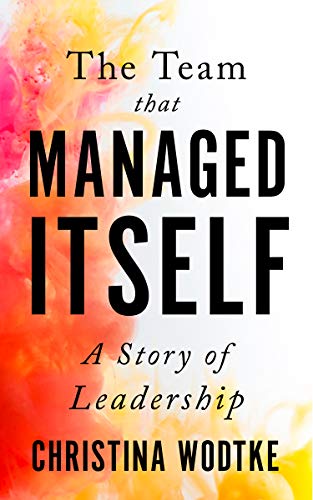A newsletter that started as a personal learning and getting-in-touch project by Ivan Krnic grew into a sociotechnical newsletter covering topics of technical excellence, organizational improvements, and productivity.
Measuring productivity
All conversations about organizational improvements get tricky when it comes to measurements. This especially holds true for measuring productivity. Many times I have heard people ask “OK, we formed a team, how do we measure it?” And almost always, what gets measured is some kind of an activity proxy such as the number of story points.
Focusing only on story points will get that metric gamed. To reach their goal, the team will pull new features, ignore prioritization, hide technical debt and buffer their estimates. They will create a local optimum for that measure that will probably result in long-term organizational performance degradation.
Since the start of the pandemic, dr. Nicole Forsgren has been analyzing developer behavior focusing on productivity in difficult times. Together with her colleagues, she has published SPACE – a framework for understanding developer productivity. To cut once and for all with a narrow-sighted, one-dimensional view on developer productivity, authors debunk common productivity myths and propose five different dimensions of productivity: Satisfaction and well-being, Performance, Activity, Communication and collaboration, Efficiency and flow.
A good set of productivity metrics should cover at least three dimensions to create tension between them. Using only those metrics that fit in a single dimension produces a skewed view that hides potential problems. This way, by balancing different aspects of productivity, an organization will achieve long-term sustainability: business outcomes and operational excellence without employee burnout.
As always in life, it’s all about balance. Take a moment and consider what do you measure today. What is important to your organization?
SPACE is now giving us guidelines when considering a set of productivity metrics. And what is more, these guidelines are equally applicable to the individual, team, and organizational levels. Cross-reference your answers with SPACE dimensions and just like in The Goonies, the next steps will reveal themselves
Interview of the Month

Rosalind Radcliffe on Z and DevOps
Rosalind Radcliffe is Distinguished Engineer and Chief Architect for DevOps on z Systems at IBM. Without any questions, she is the go-to resource for Z systems. In her career, she has been on both sides of the DevOps fence, so tearing that fence down came naturally for her. In this episode, I talked to Rosalind on how Z platform is evolving and supporting modern DevOps way of working.
The cognitive load is the resident evil in organizations today! It shreds our focus and slows down the flow of value. Fortunately, Team Topologies offers a recipe to overcome it by forming the right structure of teams and establishing the right team interactions, thus supporting DevOps way of working.
Download CROZ case study and check out how Team Topologies helped us achieve a better flow of value and keep technology in check.
Hand picked
InfoQ has published Culture & Methods Trends Report March 2021. It is interesting to see the level of adoption of specific practices across organizations. Trends to watch out for include applying the Team Topologies approach to organizational design, moving from projects to products, increasing business agility, and working on facilitation and collaboration skills for technologists working remotely.
Toby Sinclair shared his list of resources that have helped him in his journey to uncover better approaches to organizational design. A truly impressive list that starts with understanding the context and then moves on to products, value streams, organizational structure, and the role of management in modern organizations.
One of the key problems organizations are facing today is scaling. It was so easy back in the days when there were 20 of us. We knew each other and what each of us was doing. We were basically one team. Now we have grown 10x and there are 20 teams in the organization. How do we keep those teams in sync? Self-organization is great but it doesn’t happen by itself. We need to create conditions for self-organization to occur and grow. And this is not a task solely for people with the word “Agile” in their role. More importantly, this is a task for people in the middle and senior management roles. Calvin Bushor explains what this means for the role of Director of Software Engineering and how this differs from Software Engineering Team Leader.
Managing a large data warehouse can be daunting, especially with a large number of jobs running around taking up CPU and memory. In this post, our Nikolina Vuković shares how she put those nasty jobs under control by implementing the SLA concept in a data warehouse using IBM Datastage.
As Rosalind said in our podcast, Z platform is very much alive and supporting modern ways of working. If Z is your weapon of choice, and automation is your thing, consider taking it the next level by using the IBM Z Service Management Suite. Here is a story by Marko Jurman of migrating from BMC MainView to IBM Z Service Management Suite.
Read with us

The Team that Managed Itself: A Story of Leadership
In this fable, Christina Wodtke revives many of the moments we have all experienced building a team in real life. See how Allie, a newly appointed GM of a Silicon Valley game studio, navigates through situations like hiring, forming a team, setting goals, setting a continuous improvement process in place, and shortening the feedback loop. Throughout the book, you will find a lot of hints, tools, and actionable advice that will help you move away from reactive, firefighting mode and set your team up for success.
QED ideas
Quality in Enterprise Development (QED) is our annual conference and a platform where organizations share ideas and experiences on their journey to a better way of working.
Today we will reiterate how cloud and serverless influence service delivery in Sam Newman’s talk “Confusion In The Land Of The Serverless”
Photo by JESHOOTS.COM on Unsplash
Falls Sie Fragen haben, sind wir nur einen Klick entfernt.



